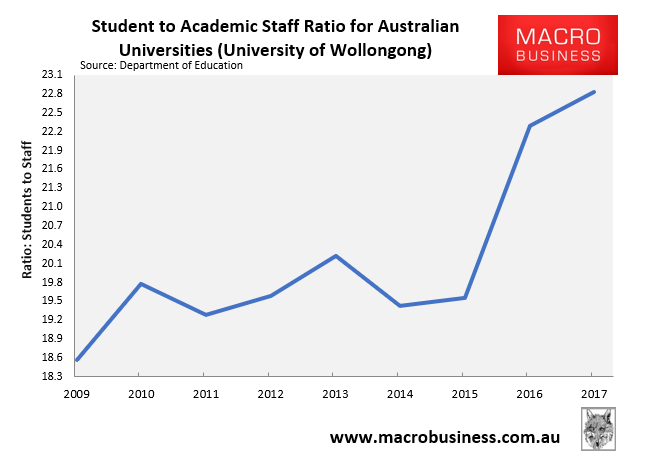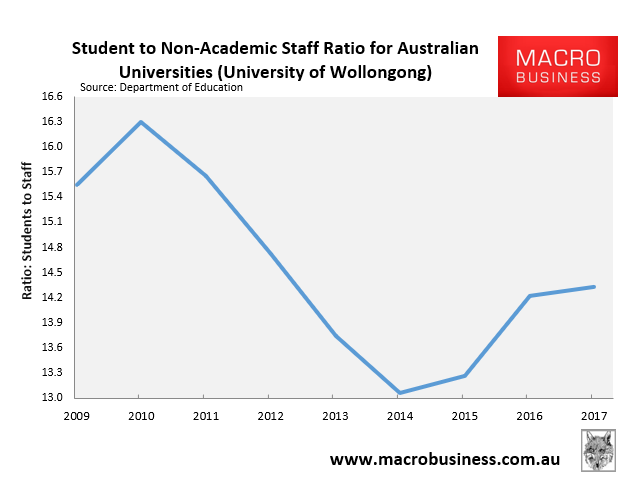The University of Wollongong is the latest Australian university to land in financial hot water after becoming over exposed to international students:
Academics are cruising for a bruising, arguing they shouldn’t have to bear the brunt of poor decisions by management, especially when executive pay has risen by 50% in 10 years…
The University of Wollongong has warned staff that unless they accept large salary cuts and agree to significant job losses, it will only be able to operate for four to six more weeks.
The university has incurred a massive drop in income after a reduction in overseas student enrolments, losing about $90 million in annual revenue.
The university is one of three in Australia whose revenue from overseas students exceeds that from domestic students…
However, the academics whose jobs are on the line say that the university is now in its dire position because of the reckless spending and borrowing decisions by management. With the university’s revenue base up by 35% in the past five years, the university should, in fact, be in a healthy position, with more than enough money to cover costs in a difficult time.
Last year alone, the university spent more than $175 million buying property, plant and equipment while spending just shy of $30 million on consultancy services and other contracts…
Academics facing pay cuts and job losses are also questioning rising executive pay. While the number of executives on the payroll have dropped from 19 in 2009 to nine in 2020, executive pay is up by 50% in the past 10 years, with the average salary just over half a million dollars. Vice-Chancellor Professor Paul Wellings’ base salary is $976,000.
While the executives have pledged to accept a 20% pay cut for 12 months, this is in fact made up of a 10% pay cut and a 10% donation to the university’s Resilience Fund.
It’s important to note that while the University of Wollongong enjoyed massive increases in international student enrolments and fees, it spent little of this bounty on improving teaching services.
As shown in the next chart, the ratio of students to academic staff at the University of Wollongong ballooned from 18.6 in 2009 to 22.8 in 2017:

Thus, we can safely assume that the quality of teaching at the University of Wollongong has been degraded.
At the same time, the bounty from international students has been wasted on non-academic (administrative) staff, executive pay, property investment and consultants.

It’s time for some tough medicine to be dealt, starting with the university’s reckless executive team, which has hosed money on empire building.

